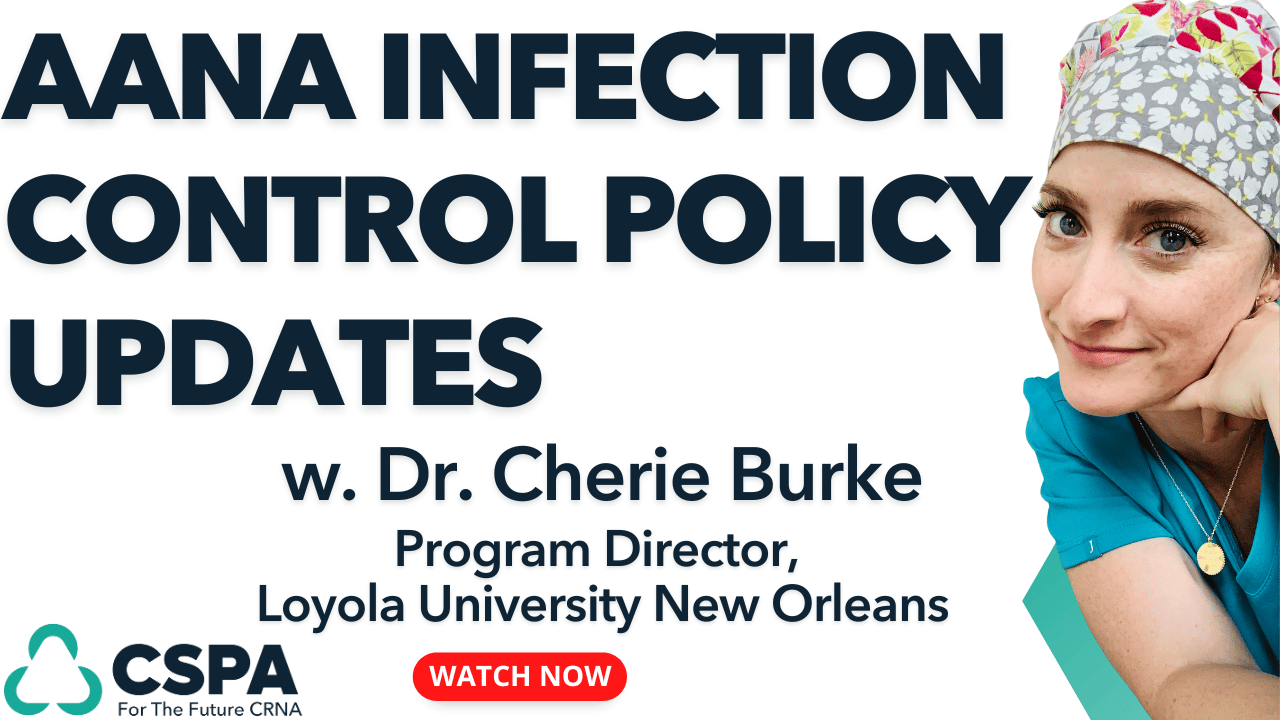
Get Your FREE Phenylephrine Study Notes
https://www.cspaedu.com/Neo-Synephrine
What is phenylephrine (neo-synephrine)? How does it work? This is the final installment of our vasopressor series, where today Jenny Finnell is diving deep into the world of Phenylephrine, commonly known as Neo. This episode promises to unravel the complexities of a drug that’s a staple in the operating room but requires a nuanced understanding to use effectively. Tune in!
Thousands of nurses have gained CRNA school acceptance with CRNA School Prep Academy. Join today for access to all of the tools proven to accelerate your CRNA success! Click here:
https://crnaschoolprepacademy.com/join
Join the CSPA email list: https://www.cspaedu.com/podcast-email
Join the Free Facebook Community here! https://www.facebook.com/groups/crnaschoolprepacademyfree
Book a mock interview, resume or personal statement critique, transcript review and more: www.teachrn.com
—
Watch the episode here
Listen to the podcast here
Phenylephrine (Neo-Synephrine): What Is It And How Does It Work?
We’re going to finish up this vasopressor series and talk about phenylephrine also commonly referred to as Neo. Let’s go ahead and get started. What is phenylephrine? Phenylephrine is a direct-acting sympathomimetic, which is a selective alpha-1 adrenergic receptor agonist. It’s used primarily as a vasoconstrictor to increase blood pressure. However, unlike epinephrine, it primarily acts on the vascular system without significant impact on the heart rate or cardiac output. Due to the receptor density being higher in the veins than in the arteries, the venous system is predominant over the arterial bed. Again, venous constriction is predominant over arterial constriction. Therefore, it causes an increase in CVP and stroke volume. Importantly, however, this effect is only transient, and over the long run, the increase in venous resistance will decrease your venous return and thus preload.
You also should be aware that phenylephrine can lead to an increase in afterload with an increase in systemic vasoconstriction. Because it’s just an alpha-1 agonist, it produces systemic vasoconstriction and therefore, the work of the heart actually increases. If the coronary circulation is impaired, the decrease in myocardial oxygen supply ratio can actually precipitate angina and has been shown to increase mortality in heart failure patients.
I want to drive this home because this is not a benign drug. I think it’s such a commonly used medication in the operating room, and it is a great drug and it has a really great purpose. However, you have to be really cognizant of not only why you’re choosing to use it as far as do they really need a vasopressor. Do they need fluid? Also understand the patient’s pathophysiology process, especially if they have some type of coronary disease knowing that this could put the patient in undue harm if used extensively and not considering the actual physiological effects of this drug on the patient.
Next, we are going to get into the pharmacological action of the drug. Again, classification is an alpha-1 adrenergic receptor agonist. It’s primarily used to treat actually nasal congestion, which you probably know is Afrin. It is also used as a vasopressor agent, which is what we talk about mostly today to treat hypotension. It can also be used for pupil dilatation during eye examinations.
Phenylephrine Mechanism of Action
Let’s get into more of the mechanism of action. The mechanism of action as an alpha-1 adrenergic receptor activation, phenylephrine induces vasoconstriction by stimulating this alpha-1 adrenergic receptor on the vascular smooth muscle cells leading to the increase in blood pressure. It causes vasoconstriction through and increases peripheral vascular resistance, which elevates blood pressure. Remember, it’s in the veins more than the arteries.
We get into the release of metabolism. This medication, as far as the source goes, is given exogenously as far as it’s just a medication. It’s not a hormone or anything like that. It’s a medication that we just give to produce an effect. Metabolism, it’s metabolized in the liver and intestines via the MAO enzyme with its metabolites being excreted in the urine.
More on the molecular action, receptor binding. It binds again selectively to the alpha-1 adrenergic receptor causing an increase in intracellular calcium levels and smooth muscles leading to vasoconstriction. It increases both systolic and diastolic blood pressure by reducing vascular diameter, also known as vasoconstriction.
Phenylephrine Dosage
Let’s go ahead and get into the dosing. Intravenous administration for hypotension, you’re looking at 40 to 60 MICs a minute and up to 100 to 180 MICs a minute. Or you can dose it at .05 to 1 MIC per kilo per minute. You can also give this medication IV push, but full disclosure, this is only really done in anesthesia. If you’re reading this and you’re in the ICU, please do not do that. If you’re in anesthesia school and you’re reading this as a current anesthesia resident, this is for you. Again, IV push, the dose per kilo is 5 to 20 MICs per kilo with the range being anywhere from 40 to 200 MICs being the most common.
I will say practicing both in adults and in pediatrics, that in the pediatric world you most commonly see this diluted down to 40 MICs per, whereas in the adult world, you’re going to see it diluted down to 100 MICs per. Again, practicing open heart for several years, you want to titrate to effect, meaning you don’t just want to whack someone with 200 MICs of Neo or 400 MICs or anything like that. You want to just work it in slowly, see how they react, and then titrate accordingly. Again, everyone interacts slightly differently. You want to make sure you understand how sensitive your patient is to this medication.
Fun Trivia About Phenylephrine
That sums up this episode, but of course, I save some trivia and some facts for the end that we will go ahead and get into. Your patient is on a monoamine oxidase inhibitor for depression and suddenly develops hypotension. What agent might be appropriate for treating hypotension? What agents should you avoid? Let’s go ahead and start with what you should avoid. You want to avoid ephedrine and any other indirect-acting agents, and you actually want to use phenylephrine which is a direct-acting sympathomimetic to treat hypotension. The reason for this is because indirect-acting agents can actually cause significant hypertension. You want to be careful with using those indirect-acting agents.

What Is Phenylephrine: Indirect acting agents can actually cause significant hypertension, so you want to be careful with using them.
Next trivia question. During the case, the patient becomes hypotensive. How should this be treated? Treatment should be directed at correcting the underlying cause and may include the following. You want to consider decreasing your anesthetic depth. You want to consider giving fluids. You want to consider placing the head of the patient in Trendelenburg, which is head down. You also want to consider giving a vasopressor such as phenylephrine. If there’s no obvious cause, the thing that I would recommend the most is just decreasing the depth of anesthesia.
Keep in mind the reason why I even put this one in here is because I don’t want you to assume that just because the blood pressure is low, that you want to jump straight to vasopressors. It’s not always the case. You want to make sure that again you’re treating the cause and not giving them something that’s not necessary. Maybe you left your gas up and you forgot about it, for example, or maybe you just dose them with some pain medication, so you expect to see a different blood pressure, but maybe they’re getting ready to make an incision on the fields. You don’t want to treat low blood pressure when they’re getting ready to cut them with a knife, which in itself would spike the blood pressure.
You want to make sure that you're treating the cause and not giving patients something that's not necessary. Share on XAgain, you have to really assess the situation, understand where you’re at in the case, and what the surgeon is actually doing. There are some times when the surgeon is actively causing the hypotension by putting pressure on the IVC for example. When the surgeon is causing the hypotension, maybe you could tolerate it, but maybe you can communicate with a surgeon if it becomes intolerable and they need to let up so the patient can recover. If that’s not possible or if it’s a critical part in the case that is just to be expected and needs to happen, you’re going to have to support the patient as best as possible to get through that point in the case. I want to put this in here because I don’t want you to jump straight to vasopressors. As soon as your patient becomes hypotensive, you really have to assess the situation and what’s going on and get a full picture of how to treat it.
Next, I want you to identify the anesthetic concerns if, say, you have an obese patient taking any of these drugs: a sympathomimetic amine and a Selective Serotonin Reuptake Inhibitor or an SSRI. These drugs can often be used to suppress appetite, so you will sometimes find that these types of bariatric patients are on these medications, especially if they are gearing up for something like a Roux-en-Y procedure where they have to lose weight prior, so just something to keep an eye on.
These drugs may actually produce hypotension, tachycardia, anxiety, psychosis, and catecholamine depletion. This is a big one. They can produce catecholamine depletion. Catecholamine depletion can lead to profound hypotension during induction or maintenance of anesthesia, which is refractory to indirect-acting vasopressors such as ephedrine. In this situation, you want to use phenylephrine, which is a direct-acting. It’s usually effective in reversing low blood pressure.
Next is you have phenylephrine also known as Neo-Synephrine or Neo, which stimulates what receptors? Then also describe the cardiovascular action of phenylephrine. Phenylephrine activates alpha-1 adrenergic receptors, and phenylephrine produces a greater venoconstriction than arterial constriction resulting in elevated blood pressure due to both an increase in SVR and an increase in venous return. You have a reflex decrease in heart rate and cardiac output.
The reason I’m going to go into the next one is because we briefly mentioned the reflex decrease in heart rate. I want to explain it in a little more detail. It doesn’t have to do with particularly Neo-Synephrine, but I wanted to describe the baroreceptor reflex. The baroreceptor-mediated reflex is a physiological response triggered by the activation of baroreceptors, which are specialized stretch receptors located in large arteries like the carotid and aorta, which are considered high-pressure baroreceptors, and in the heart and lungs which are low-pressure or low volume baroreceptor.
High-pressure baroreceptors monitor blood pressure at rest and during the cardiac cycle, while low-blood-pressure baroreceptors detect changes in blood volume and the degree of stretch in the ventricles and atria as well as the dynamics of lung inflation and deflation. When you inflate your lungs, you decrease preload. When you deflate your lungs, you increase preload. It’s all because of the pressure. Changes such as hypotension, low blood pressure, and hypovolemia, low blood volume, lead to decreased activation of these baroreceptors.
Additionally, some cardiopulmonary vagal afferent, which if you recall, afferent, take things to, so they take signals to your CNS. They act as chemoreceptors and can trigger a cardiovascular response that interacts with baro reflex mechanisms influencing heart rate, blood vessel constriction, and overall cardiovascular stability.
That sums us up. I’m going to give you a bonus in your PDF notes, which are again listed below, so go ahead and grab those. The bonus in the PDF is going to explain how chemo receptors work. Go ahead and grab your copy now. Again, chemoreceptors didn’t really have relevance for this lecture, but I thought it was interesting and definitely something that you will have to study in CRNA school. You are welcome. I hope you enjoy it. I hope you guys loved the series, this little mini vasopressor series. If you would like more of this type of content, just let me know. Shoot us an email at Hello@CRNASchoolPrepAcademy.com. We would love to hear from you. Of course, we appreciate any reviews you leave for the show. It really helps us. Thank you for the time that you take to do so. Until next time, take care.
Important Links
- Get your FREE Phenylephrine Study Guide here: https://www.cspaedu.com/Neo-Synephrine
-
FREE! 8 Steps to Becoming a CRNA: https://www.cspaedu.com/ruxzegbt
Thousands of nurses have gained CRNA school acceptance with CRNA School Prep Academy. Join today for access to all of the tools proven to accelerate your CRNA success! Click here:
https://crnaschoolprepacademy.com/join
Join the CSPA email list: https://www.cspaedu.com/podcast-email
Join the Free Facebook Community here! https://www.facebook.com/groups/crnaschoolprepacademyfree
Book a mock interview, resume or personal statement critique, transcript review and more: www.teachrn.com









